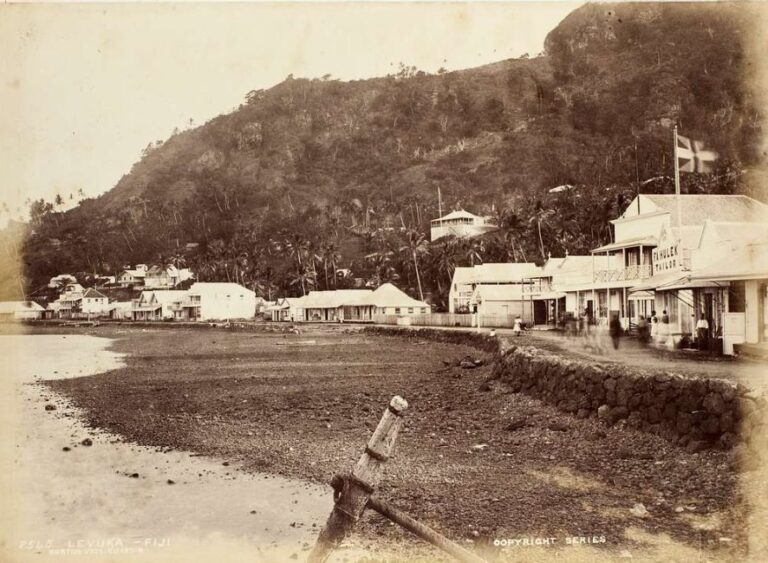Here is a detailed overview of the History of Fiji:
HISTORY OF FIJI
1. Prehistoric Fiji (Before 1000 AD)
- The first settlers arrived in Fiji around 3,500 years ago, part of the Austronesian migration.
- Later, Melanesian people settled and intermixed with the early Austronesians.
- Archaeological evidence includes Lapita pottery, showing links to other Pacific island cultures.
2. Traditional Fijian Society (1000 AD – 1700s)
- Fiji developed a complex chiefdom system with powerful clans and tribal warfare.
- Traditional Fijian society was organized around mataqali (clans) and vanua (land/people units).
- Cannibalism was practiced in warfare and ritual contexts.
- Oral histories and traditions flourished; each village and region developed unique customs.
3. European Contact (1643 – 1800s)
- First recorded European visitor: Abel Tasman (Dutch explorer) in 1643.
- Later visited by Captain James Cook and other navigators.
- By the 1800s, European missionaries, traders, and beachcombers began settling.
- This period saw increased tribal conflict, often fueled by foreign weapons.
4. The Kingdom of Fiji (1871 – 1874)
- In an effort to unite the islands, Ratu Seru Epenisa Cakobau, a powerful chief, declared himself King of Fiji in 1871.
- He attempted to form a centralized government but faced debt and unrest.
- In 1874, Cakobau ceded Fiji to Great Britain, making it a British colony.
5. British Colonial Rule (1874 – 1970)
- Fiji was under British rule for 96 years.
- Indentured laborers from India (known as “girmitiyas”) were brought to work on sugar plantations between 1879 and 1916.
- These laborers and their descendants significantly shaped Fiji’s demographic and cultural landscape.
- Infrastructure, Christian missions, schools, and Western governance structures were introduced.
6. Move Toward Independence (1940s – 1970)
- Political consciousness grew among both Indigenous Fijians and Indo-Fijians.
- In the 1960s, constitutional reforms were made, allowing for more local participation in governance.
- On October 10, 1970, Fiji gained independence from Britain, with Ratu Sir Kamisese Mara as the first Prime Minister.
7. Post-Independence & Political Turmoil (1970 – 2000)
- Fiji remained part of the Commonwealth and adopted a Westminster-style democracy.
- Ethnic tensions between Indigenous Fijians and Indo-Fijians led to two military coups in 1987, ousting a government perceived as dominated by Indo-Fijians.
- Fiji was declared a Republic and briefly left the Commonwealth.
- A new constitution in 1997 aimed to address ethnic concerns and restore democracy.
8. Coups and Political Change (2000 – 2014)
- Another coup occurred in 2000, followed by a civilian-led government.
- In 2006, Commodore Frank Bainimarama seized power in another coup, citing corruption and racial discrimination in politics.
- He suspended the constitution in 2009 and ruled as interim Prime Minister.
9. Return to Democracy (2014 – Present)
- In 2014, democratic elections were held; Bainimarama’s party (FijiFirst) won and he became Prime Minister.
- He was re-elected in 2018.
- In 2022, a coalition led by Sitiveni Rabuka (a former coup leader-turned-democrat) defeated Bainimarama, returning him to leadership.
- Wiliame Katonivere became President in 2021.
⚖️ Historical Themes
- Ethnic relations (between Indigenous Fijians and Indo-Fijians)
- Land ownership and rights
- Military influence in politics
- Economic dependence on tourism and sugar
- Resilience and reform, especially post-2010



